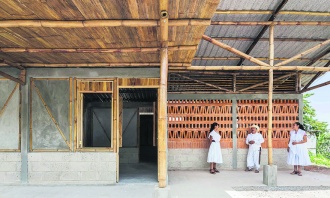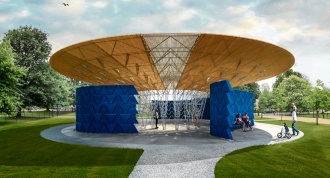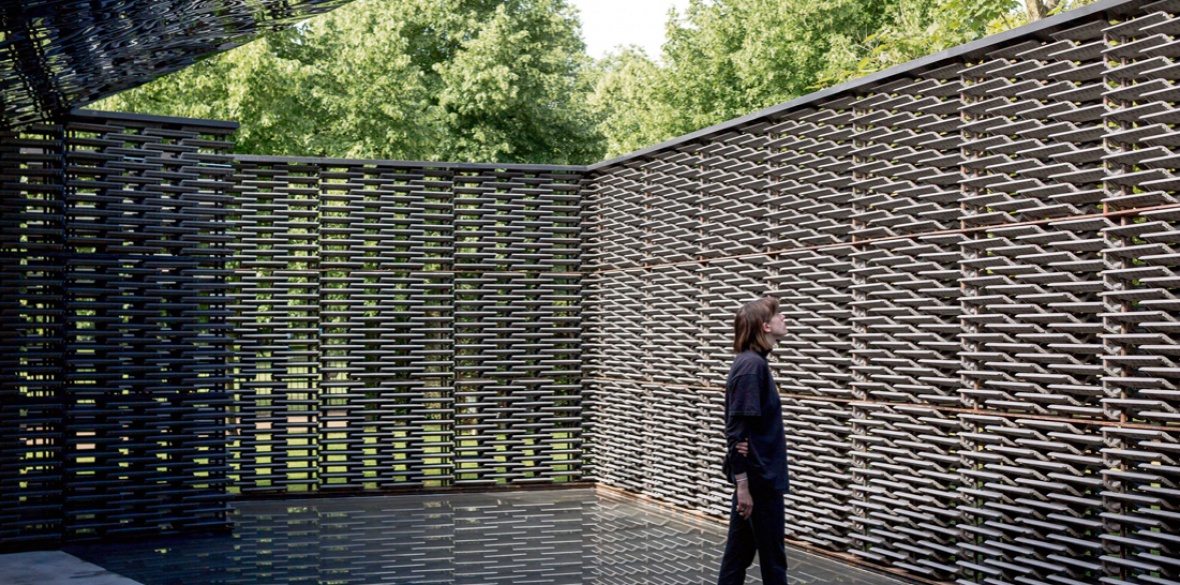This is the last article you can read this month
You can read more article this month
You can read more articles this month
Sorry your limit is up for this month
Reset on:
Please help support the Morning Star by subscribing here
FRIDA ESCOBEDO’S Pavilion at the Serpentine in London this year has none of the luminous joie de vivre Francis Kere regaled us with a summer ago, the spatial intrigue Bjarke Ingels Group offered in 2016 or the mesmerising filigree of Sou Fujimoto’s Cloud construct in 2013.
Formally, Escobedo’s three-metre high “walls,” made up of stacks of standard dark-grey cement roof tiles, demarcate two rectangular atria. On the inside, the lattice patterning filters and fragments outside vistas and shifts in light as well as any air circulation.
Escobedo has used triangulated breeze blocks when remodelling the Siqueiros gallery in Cuernavaca in 2014 to similar effect but on a larger scale.

The pavilion has, to some extent, the monastic minimalism of Peter Zumthor’s black inner-yard enclosure of 2011, without being claustrophobic or offering solace to the agoraphobic. The prevailing impression is one of “empty walls” devoid of significance or interpretation, which emanate an unchallenging passivity.
The press release claims of “aligning its outer walls with the Serpentine Gallery” or the inner structure being “in line with the Greenwich Meridian” sound like superfluous and annoying over-intellectualisations that only confuse further.
This is in contrast to Kere’s “tree” of last year, which required no intellectual acrobatics as it embodied the living communal soul of rural equatorial Africa — mesmerising, nourishing and inspiring with its core ideas of togetherness and sharing. Rarely has the pavilion been more edifying or poetic and yet so practical in intention.
Escobedo is the youngest architect, and only the second woman, ever to participate in this the 18th edition of the project, with Zaha Hadid being the first.

She is a regular invitee on the circuit of international architecture biennales and triennials but it could be argued that it might have been of far greater interest to have invited Mariana Ordonez Grajales and Jesica Amescua who, in 2015, set up Communal: the Architecture Workshop in Mexico City and a year later won the silver medal in the first national competition for rural housing in 2016.
Their undertaking is a revolutionary, community-led and participatory design and construction project tied in with popular housing initiatives. They have been developing new forms of vernacular architecture in rural communities but, more importantly, campaigning to stave off the negative impact of a standardisation brought about by dominant market forces.
These too often produce culturally alienating and short-lived structures and lead directly to an irreparable loss of the built heritage — particularly of the native peoples — as well as the skills that sustain it.
This is a country-specific mission worthy of recognition. At the Serpentine, it might have been far more intriguing and edifying to have been allowed to explore, absorb and learn from a set of unadulterated Mexican architectural ideas and practice rather than Escobedo's adaptation to Western aesthetic norms, sensibilities and, unfortunately, formal blandness.
Open until October 7, details: serpentinegalleries.org









